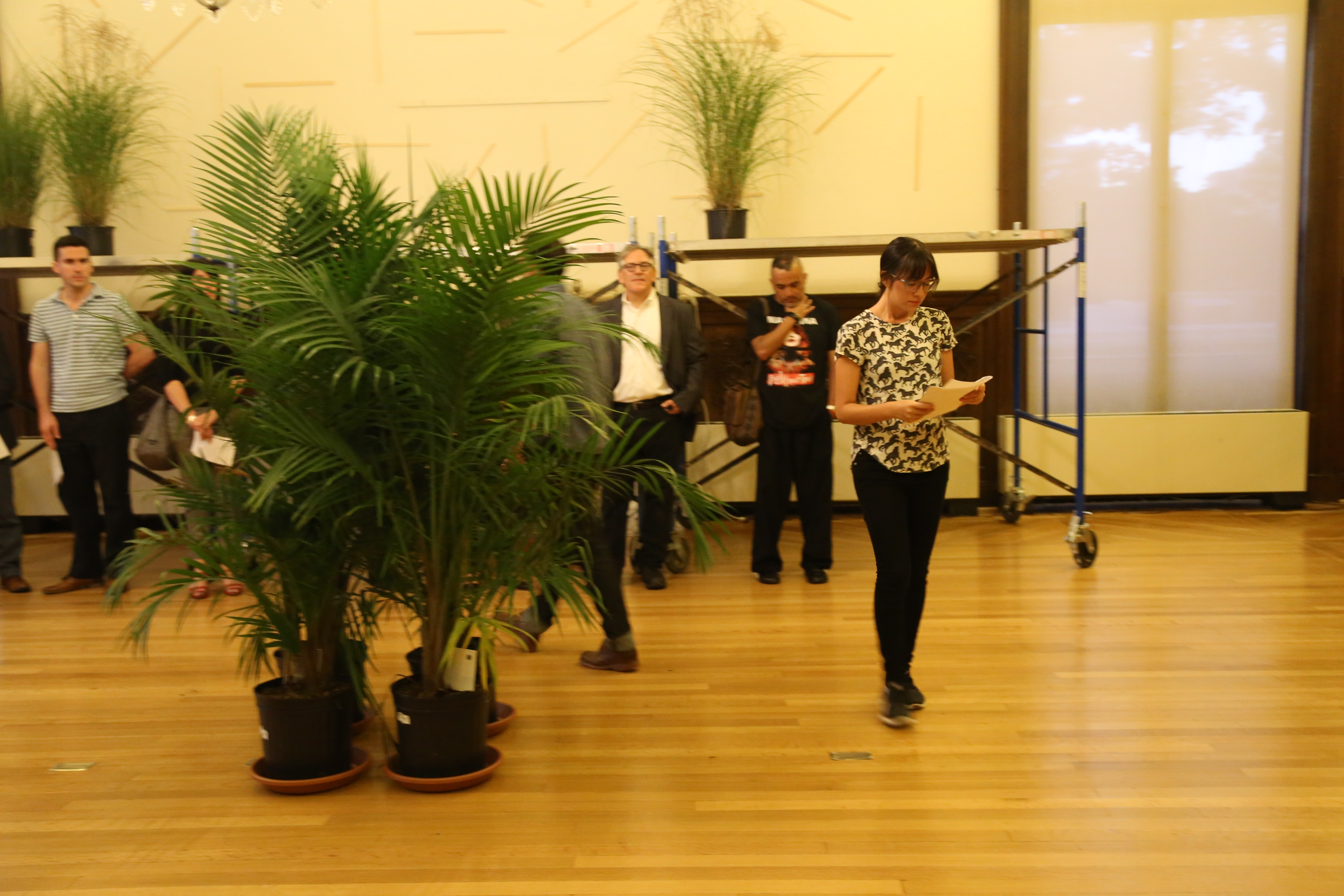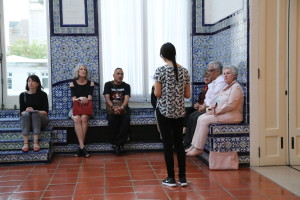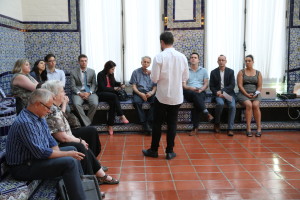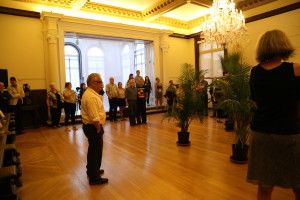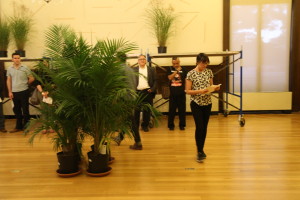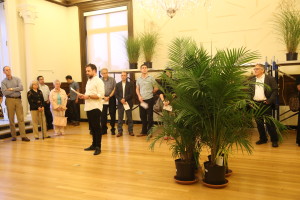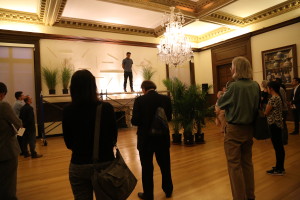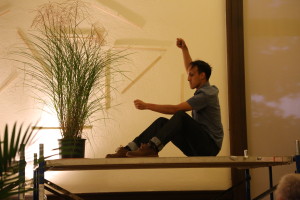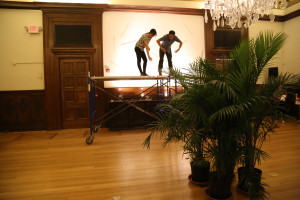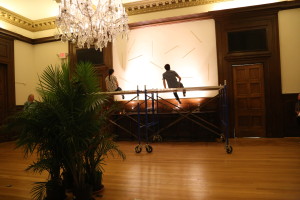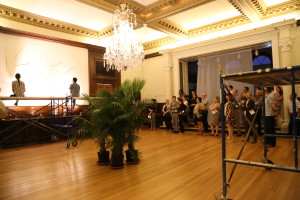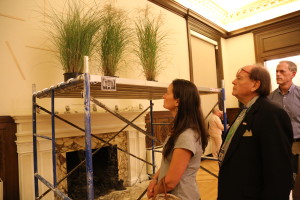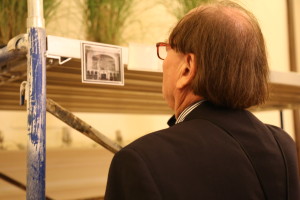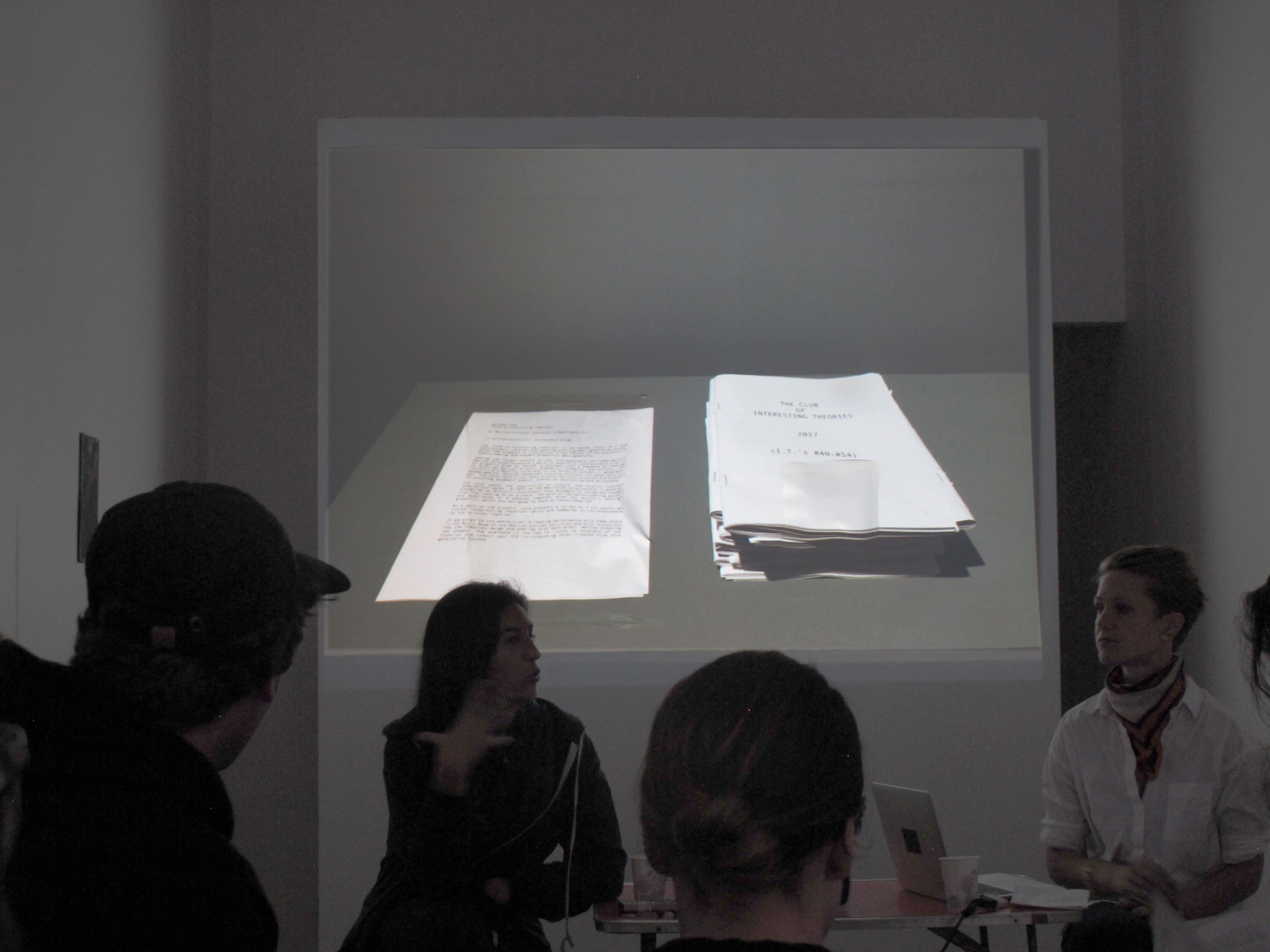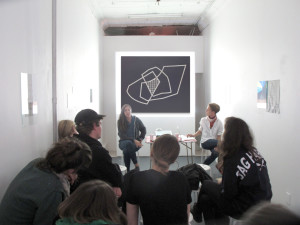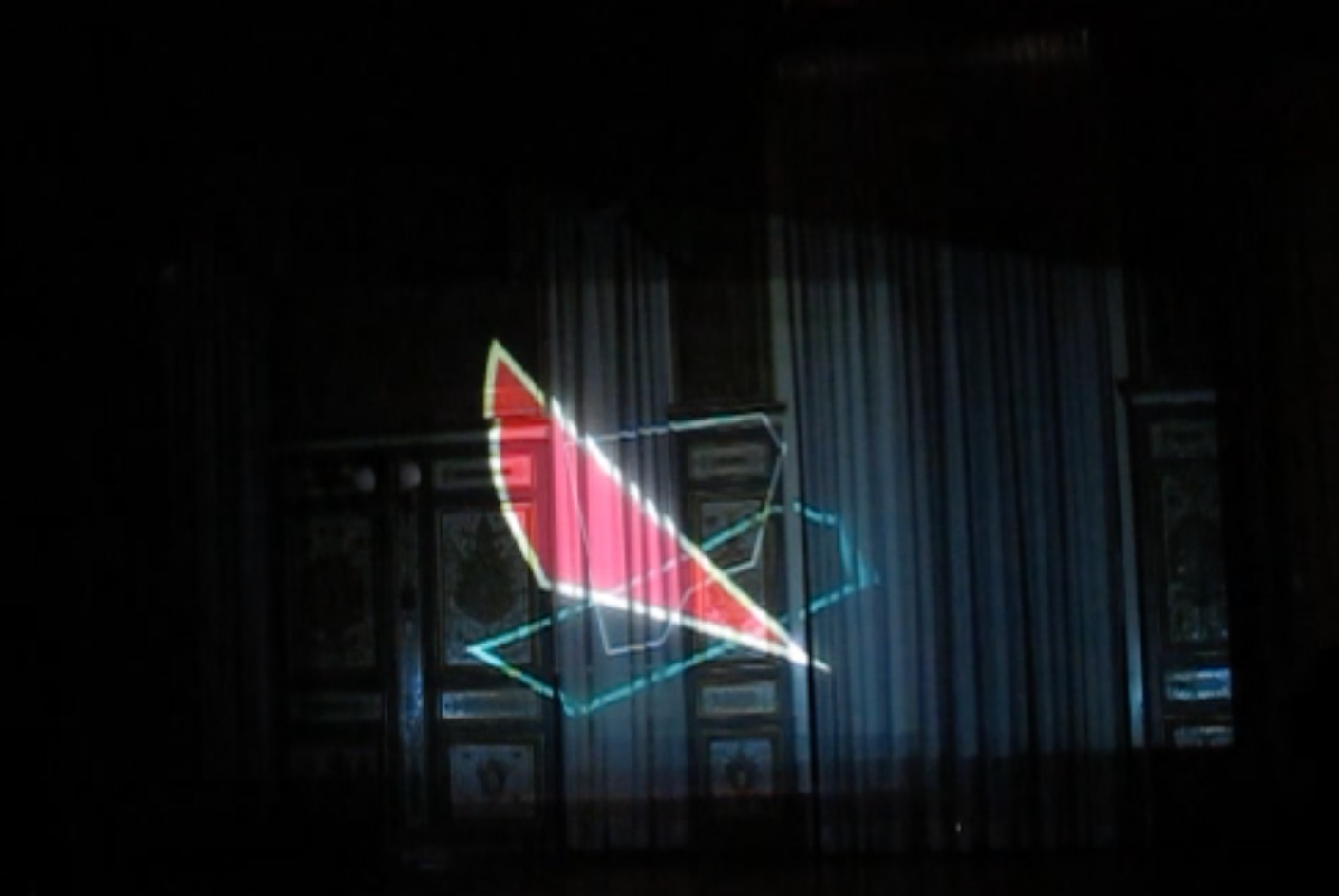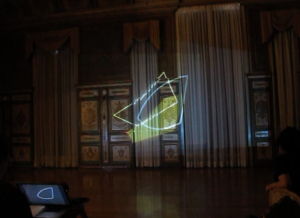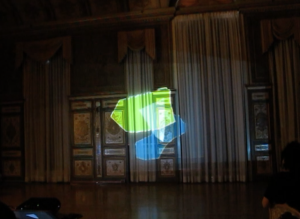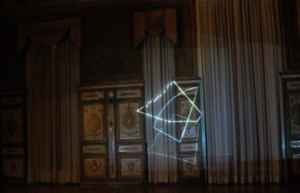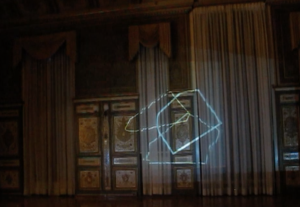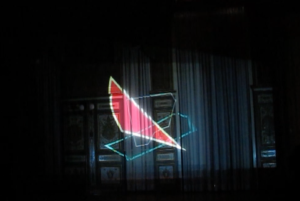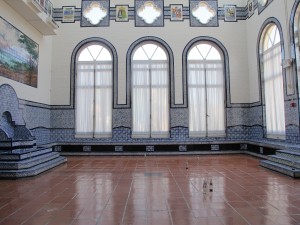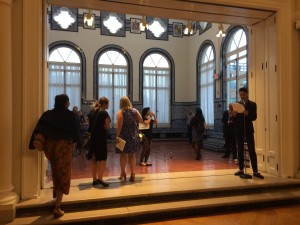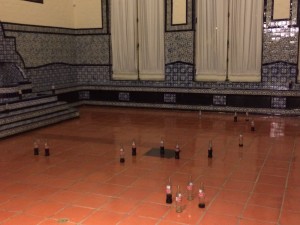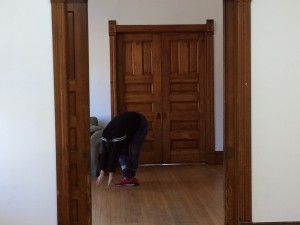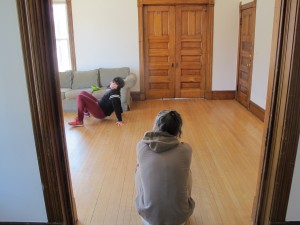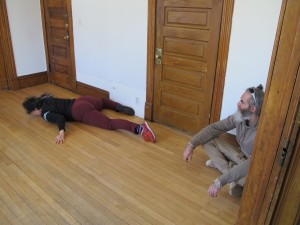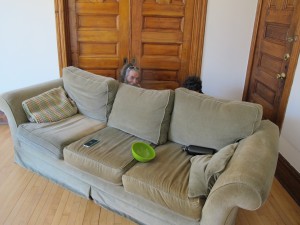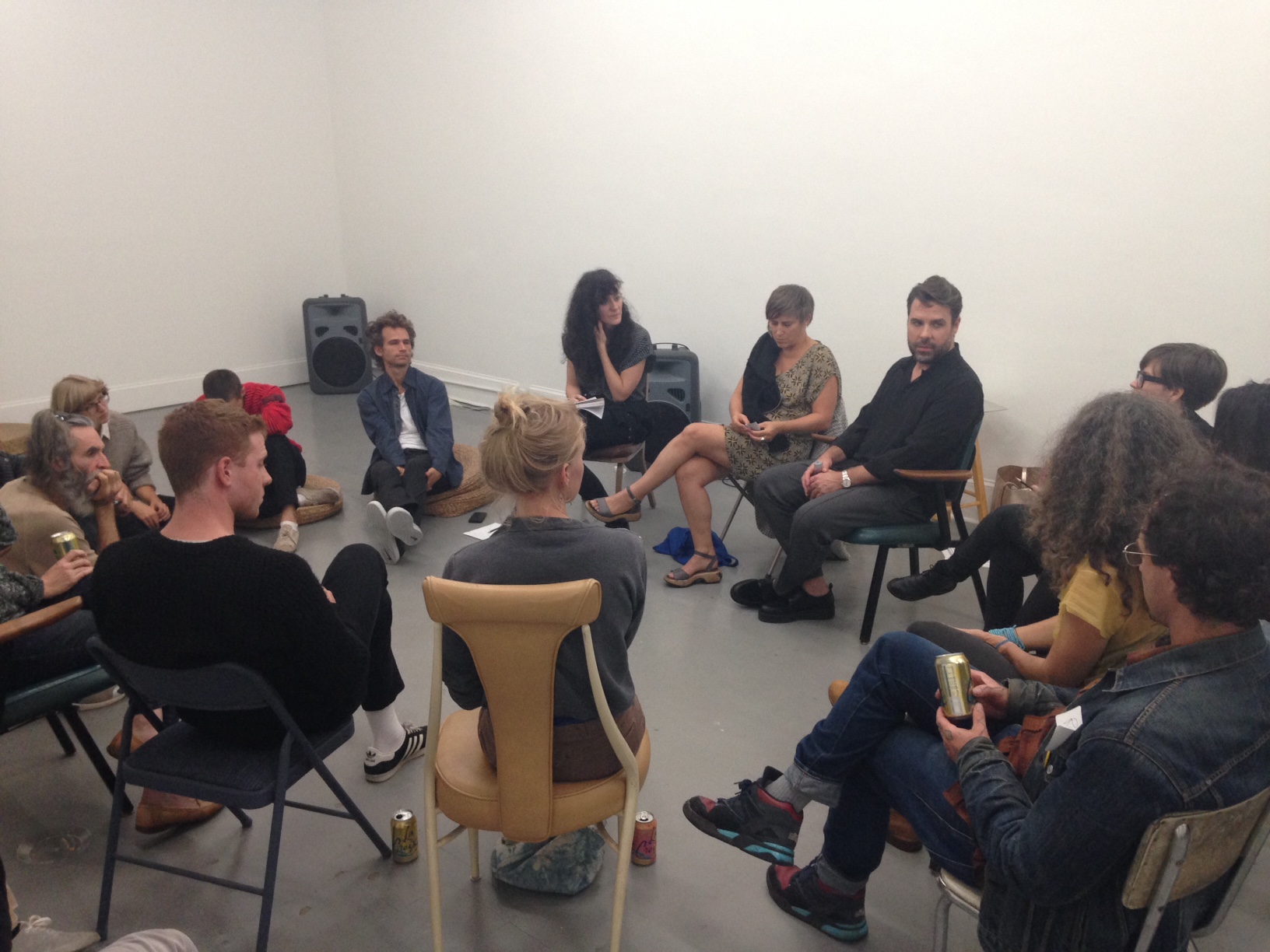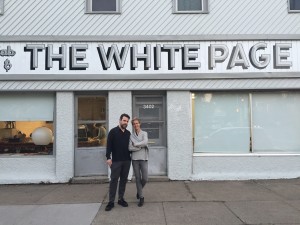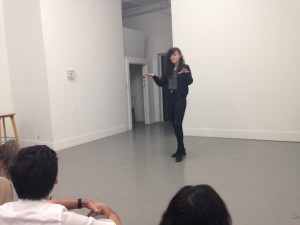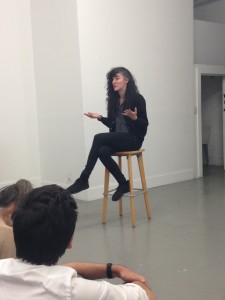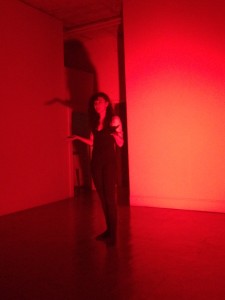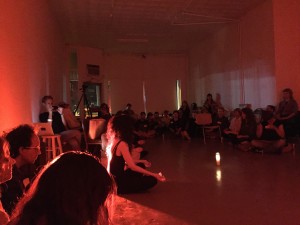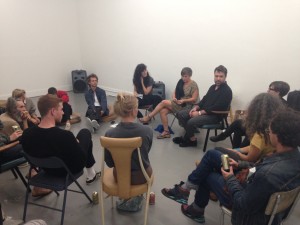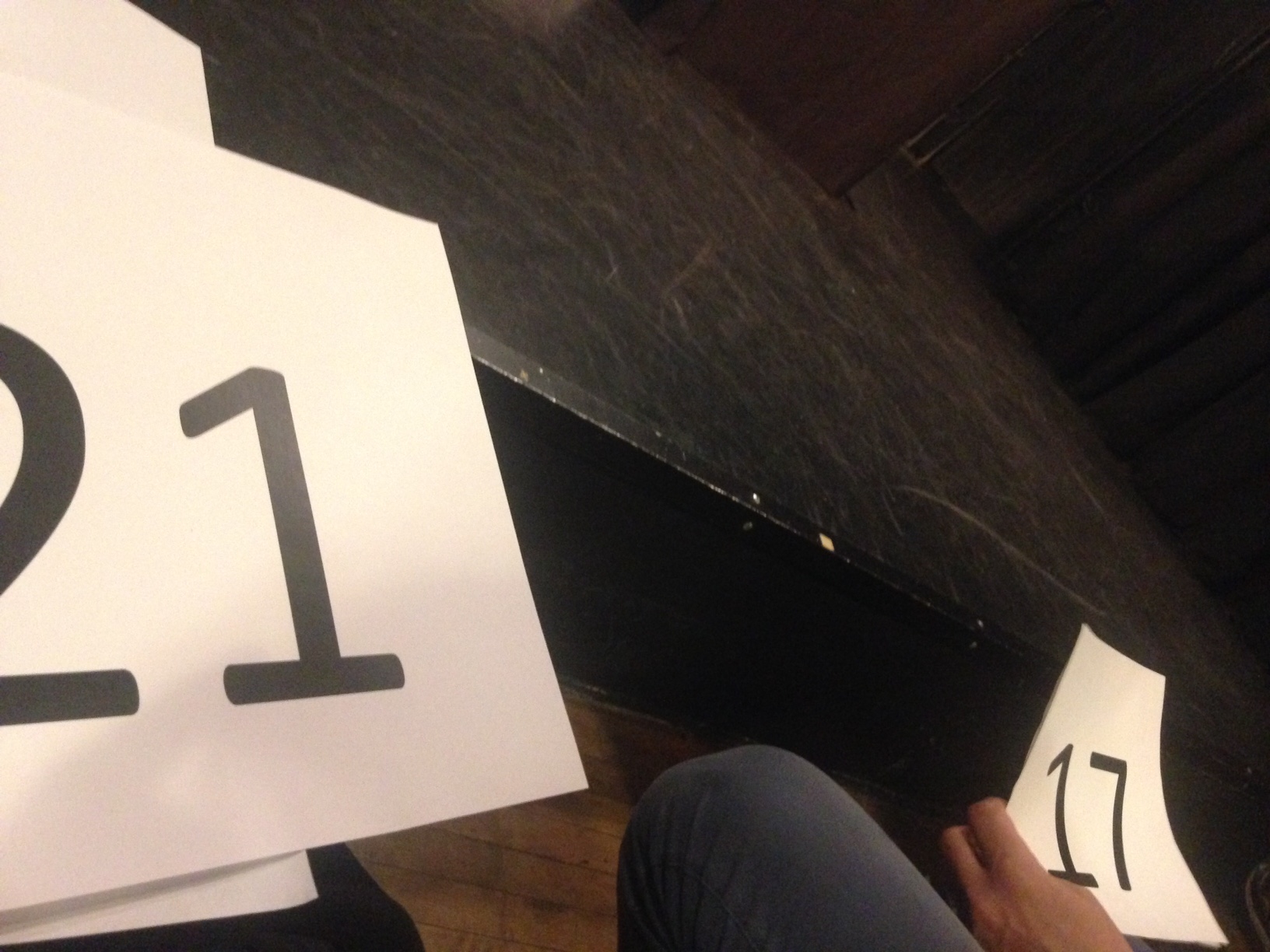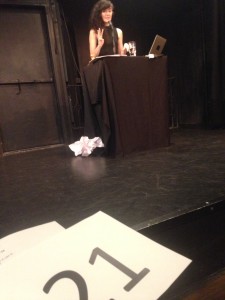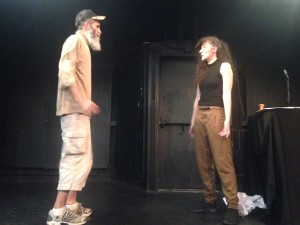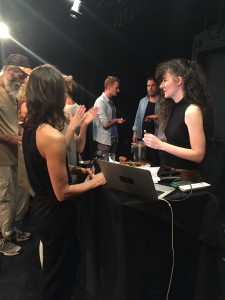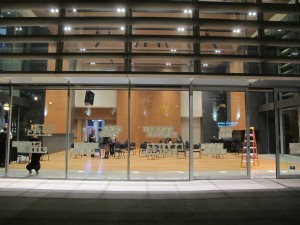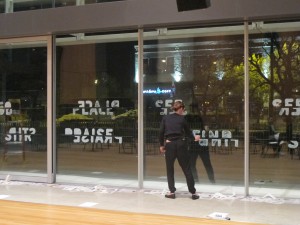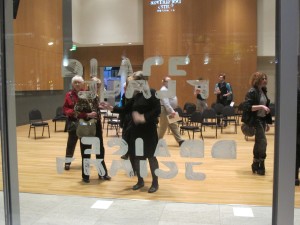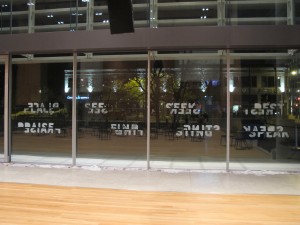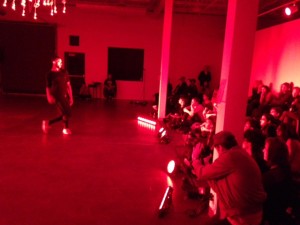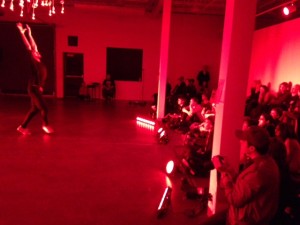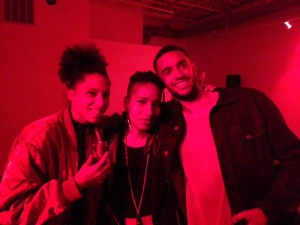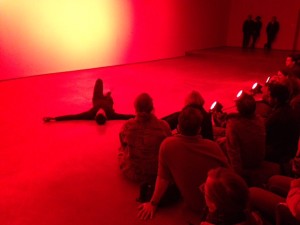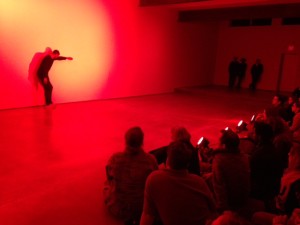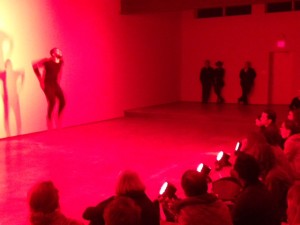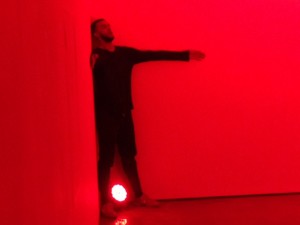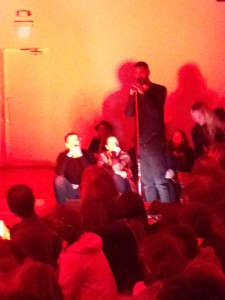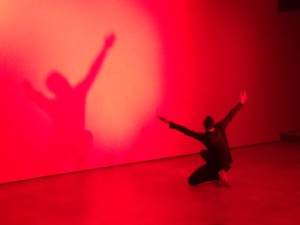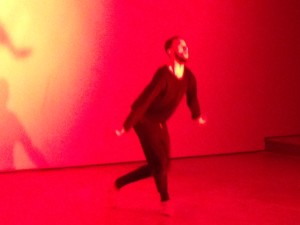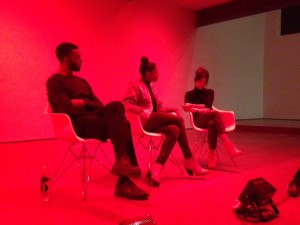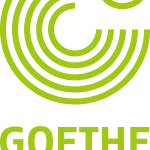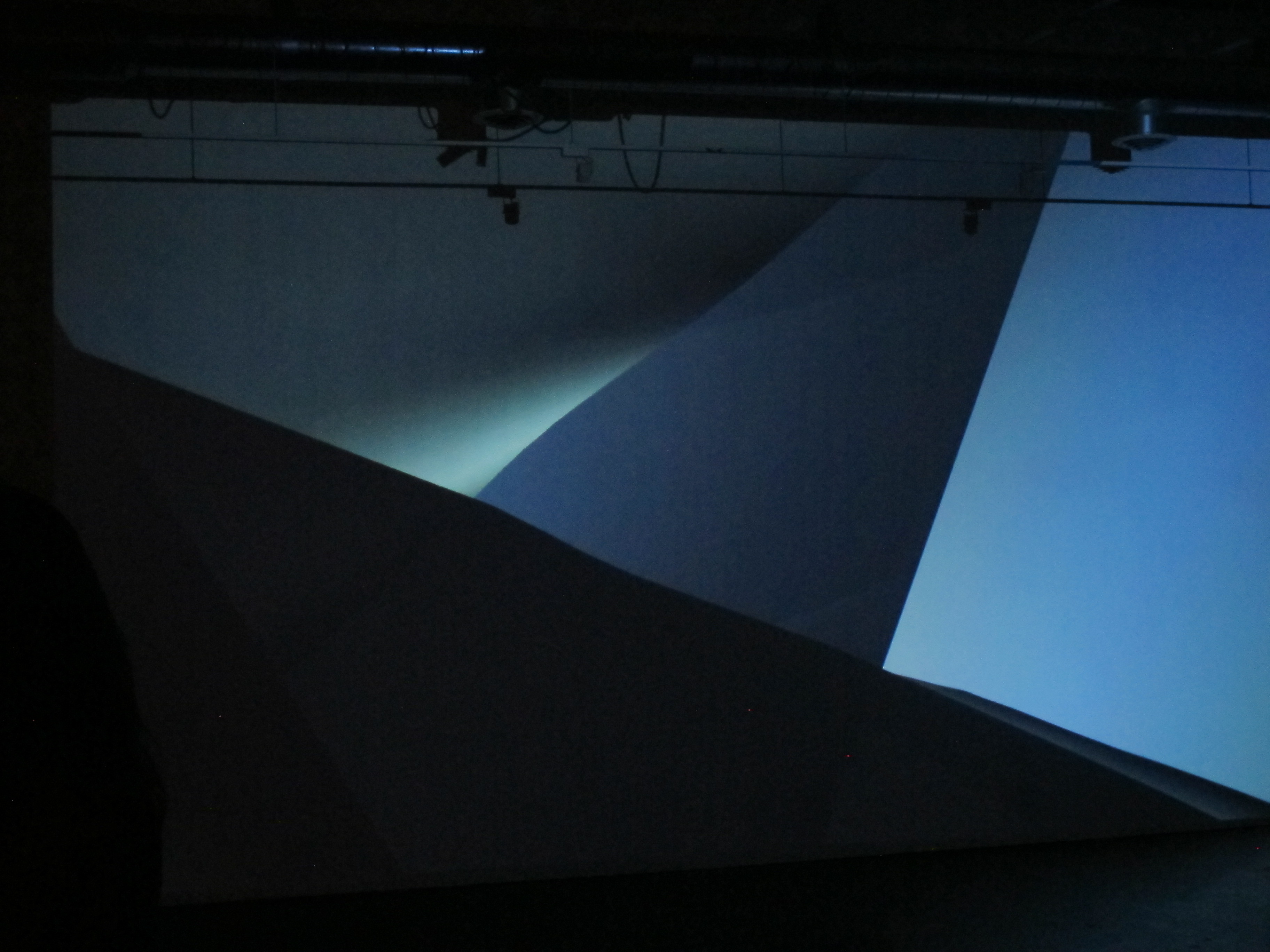Chantal Peñalosa presented an audio-visual performance building upon research into the painted murals in the Mexican Cultural Institute’s historic 16th Street MacVeagh Mansion. Originally constructed in 1910 as a summer home, the building was re-designated as the official Embassy of Mexico in 1921. This same year Guatemalan painter Rafael Yela Günther arrived in Mexico where he met prominent painter Diego Rivera in the early years of the Mexican muralist movement. In 1925, Yela Günther was commissioned by the Mexican government to design a series of murals for the Mexican Embassy’s Dining Room, connecting the grand Beaux Arts style architecture to the cultural and stylistic traditions of Mexico. The decision also reflected an interest of the time in indigeneity on the South American continent.
Yela’s original murals were eventually painted over. Later, other murals were added with more nationalistic scenes composed by Roberto Cueva del Río, a student of the Rivera mural style of painting that was well-established by this time. This second generation of murals remain in the building to this day and display a cross-section of Mexico’s national history. The scenes range from depictions of the mythological founding of Aztec culture, the arrival of Christopher Columbus, rural and agricultural festivities to Mexico’s modern industrialization. As a whole, del Río’s murals celebrate the continuity of old Mexico and the new.
Peñalosa invited the public at the Mexican Cultural Institute to engage with these competing historical depictions in a 30-minute performance that employs sound, visuals, and movement.
Chantal Peñalosa studied Fine Arts at the Universidad Autónoma de Baja California and the University of São Paulo. Peñalosa’s research-based practice is inspired by small gestures and interventions in everyday life, which are meant to expound upon notions of labor, waiting and delay. Repetition is a crucial element in her process, functioning as an allusion to the absurdity, weathering, and alienating effects of work. She was awarded the Acquisition Prize in the XIV edition of the Biennale of the Northwest and was awarded FONCA fellowships in the Young Artists category (2013-2014 and 2015-2016). In 2014 she participated in the 4th edition of the Bancomer Program for young artists at the Museo de Arte Carrillo Gil in Mexico City. Most recently, her work has been shown at Casa del Lago in Mexico City and at AIR Antwerpen.
A special thank you to Gustavo Morales and Alberto Fierro Garza (MCI of D.C.) and The White Page.
With the support of the Mexican Cultural Institute of Washington D.C., the Embassy of Mexico in the United States, and the Mexican Agency for International Development Cooperation.
